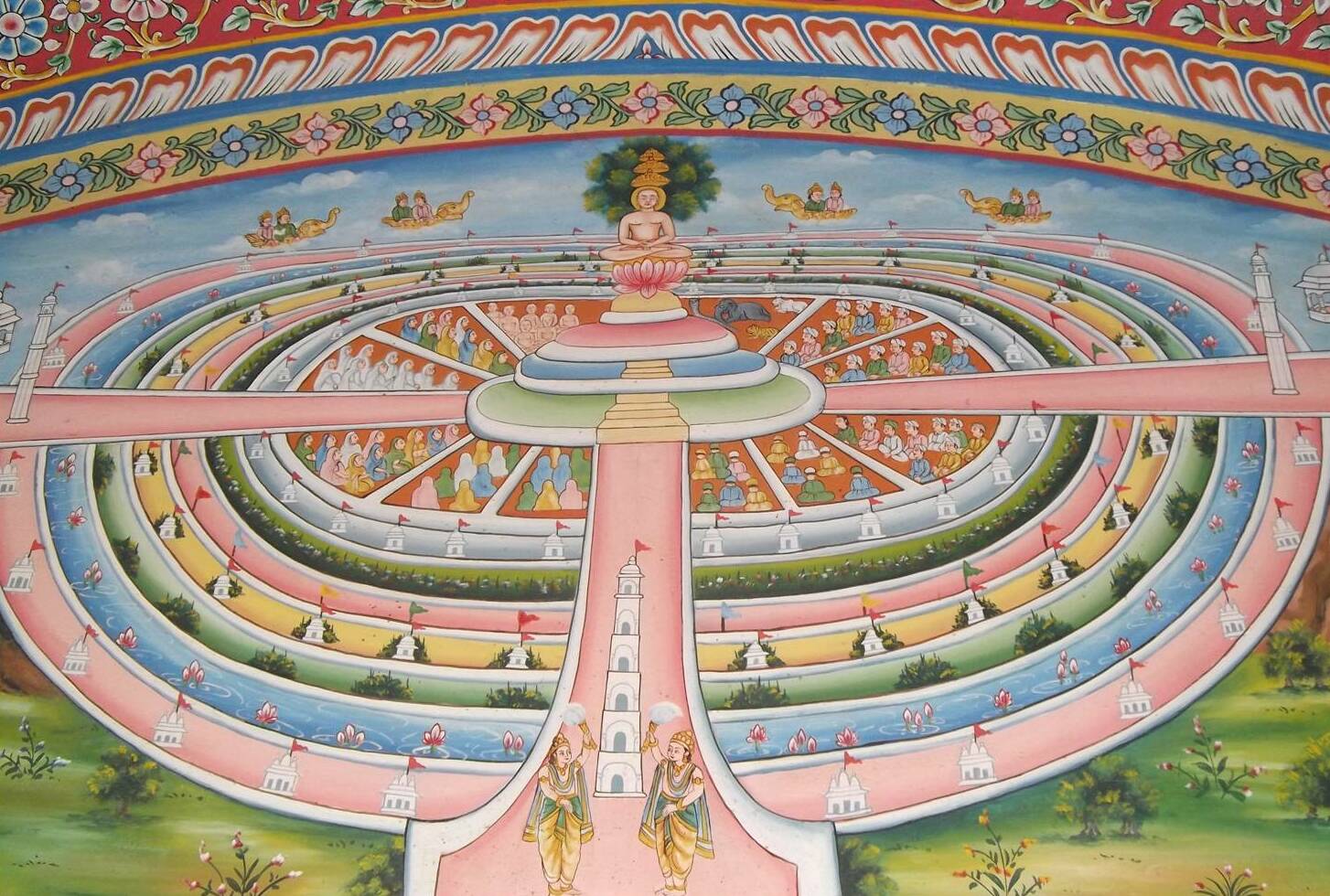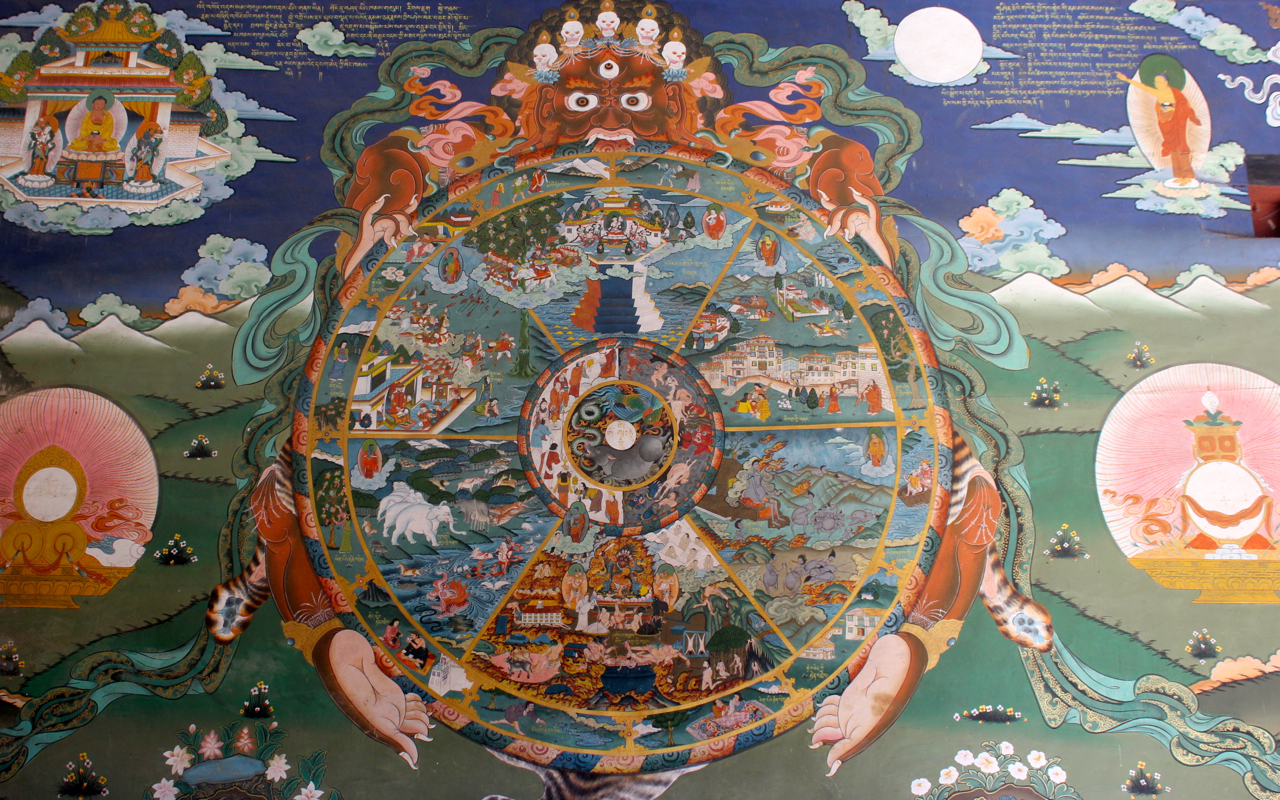|
Aryika
''Aryika'', also known as ''Sadhvi'', is a female mendicant (nun) in Jainism. History In the traditional Digambara tradition, a male human being is considered closest to the apex with the potential to achieve liberation, particularly through asceticism. Women must gain karmic merit, to be reborn as man, and only then can they achieve spiritual liberation in the Digambara sect of Jainism. This view is different from the Svetambara sect that believes that women too can achieve liberation from ''Saṃsāra'' by being mendicants and through ascetic practices. According to Svetambara Jain texts, from ''Kalpasutras'' onwards, Jainism has had more ''sadhvis'' than ''sadhus'' (female than male mendicants). In Tapa Gacch of the modern era, the ratio of sadhvis to sadhus (nuns to monks) is about 3.5 to 1. This is much higher, and in contrast to the gender ratio historically observed in Buddhism and Hinduism. Traditionally, in contrast to Svetambara, the Digambara sect has had far l ... [...More Info...] [...Related Items...] OR: [Wikipedia] [Google] [Baidu] |
Jain Monasticism
Jain monasticism refers to the order of monks and nuns in the Jain community and can be divided into two major denominations: the ''Digambara'' and the ''Śvētāmbara''. The monastic practices of the two major sects vary greatly, but the major principles of both are identical. Five ''mahāvratas'' (Great Vows), from Mahavira's teachings, are followed by all Jain ascetics. Historians believe that a united Jain ''sangha'' (community) existed before 367 BCE, about 160 years after the ''moksha'' (liberation) of Mahavira. The community then gradually divided into the major denominations. Terminology ''Digambaras'' use the word ' for male monastics and ''aryika'' for female monastics. ''Digambara monks'' are also called ''nirgrantha'' (without bonds). ''Śvētāmbaras'' use the word ''sadhvi''s for female monastics. History Mahavira had 11 chief disciples, Indrabhuti Gautama being the most senior. Each chief disciple was made responsible for 250 to 500 monks. The Jain sangha ... [...More Info...] [...Related Items...] OR: [Wikipedia] [Google] [Baidu] |
Jainism
Jainism ( ), also known as Jain Dharma, is an Indian religions, Indian religion. Jainism traces its spiritual ideas and history through the succession of twenty-four tirthankaras (supreme preachers of ''Dharma''), with the first in the current time cycle being Rishabhadeva, whom the tradition holds to have lived millions of years ago, the twenty-third ''tirthankara'' Parshvanatha, whom historians date to the 9th century BCE, and the twenty-fourth ''tirthankara'' Mahāvīra, Mahavira, around 600 BCE. Jainism is considered to be an eternal ''dharma'' with the ''tirthankaras'' guiding every time cycle of the Jain cosmology, cosmology. The three main pillars of Jainism are ''Ahimsa in Jainism, ahiṃsā'' (non-violence), ''anekāntavāda'' (non-absolutism), and ''aparigraha'' (asceticism). Jain monks, after positioning themselves in the sublime state of soul consciousness, take five main vows: ''ahiṃsā'' (non-violence), ''satya'' (truth), ''Achourya, asteya'' (not stealing), ''b ... [...More Info...] [...Related Items...] OR: [Wikipedia] [Google] [Baidu] |
Jain Meditation
Jain meditation (''dhyāna'') has been the central practice of spirituality in Jainism along with the Three Jewels. Jainism holds that emancipation can only be achieved through meditation or Shukla Dhyana.' According to Sagarmal Jain, it aims to reach and remain in a state of "pure-self awareness or knowership."Jain, Sagarmal, The Historical development of the Jaina yoga system and the impacts of other Yoga systems on Jaina Yoga, in "Christopher Key Chapple (editor), Yoga in Jainism" chapter 1. Meditation is also seen as realizing the self, taking the soul to complete freedom, beyond any craving, aversion and/or attachment. The practitioner strives to be just a knower-seer (''Gyata-Drashta''). Jain meditation can be broadly categorized to the auspicious (''Dharmya Dhyana'' and ''Shukla Dhyana'') and inauspicious (''Artta'' and ''Raudra Dhyana''). The 20th century saw the development and spread of new modernist forms of Jain ''Dhyana,'' mainly by monks and laypersons of Śvētām ... [...More Info...] [...Related Items...] OR: [Wikipedia] [Google] [Baidu] |
Samavasarana
In Jainism, Samavasarana or Samosharana ("Refuge to All") is the divine preaching hall of the Tirthankara, stated to have more than 20,000 stairs in it. The word ''samavasarana'' is derived from two words, ''sama'', meaning general and ''avasara'', meaning opportunity. It is an important feature in Jain art. The Samavasarana seems to have replaced the original Jain stupa as an object of worship. Samavasarana Hall In samavasarana hall, the ''tirthankara'' sits on a throne without touching it (about two inches above it). Around the tirthankara sit the ''ganadharas'' (chief disciples). Living beings sit in the following order: *In the first hall, ascetics *In the second hall, one class of deva ladies *In the third hall, ''aryikas'' (nuns) and laywomen *In the next three halls, three other classes of deva ladies *In the next four halls, the four classes of devas (heavenly beings) *Men, in the eleventh hall *Animals, in the last hall According to Jain texts, there would be four w ... [...More Info...] [...Related Items...] OR: [Wikipedia] [Google] [Baidu] |
Digambara
''Digambara'' (; "sky-clad") is one of the two major schools of Jainism, the other being ''Śvētāmbara'' (white-clad). The Sanskrit word ''Digambara'' means "sky-clad", referring to their traditional monastic practice of neither possessing nor wearing any clothes. Digambara and Śvētāmbara traditions have had historical differences ranging from their dress code, their temples and iconography, attitude towards female monastics, their legends, and the texts they consider as important. Digambara monks cherish the virtue of non-attachment and non-possession of any material goods. Monks carry a community-owned ''picchi'', which is a broom made of fallen peacock feathers for removing and thus saving the life of insects in their path or before they sit. The Digambara literature can be traced only to the first millennium, with its oldest surviving sacred text being the mid-second century ''Ṣaṭkhaṅḍāgama'' "Scripture in Six Parts" of Dharasena (the Moodabidri manuscripts) ... [...More Info...] [...Related Items...] OR: [Wikipedia] [Google] [Baidu] |
Saṃsāra
''Saṃsāra'' (Devanagari: संसार) is a Pali/Sanskrit word that means "world". It is also the concept of rebirth and "cyclicality of all life, matter, existence", a fundamental belief of most Indian religions. Popularly, it is the cycle of death and rebirth. ''Saṃsāra'' is sometimes referred to with terms or phrases such as transmigration/reincarnation, karmic cycle, or Punarjanman, and "cycle of aimless drifting, wandering or mundane existence". The concept of ''saṃsāra'' has roots in the post-Vedic literature; the theory is not discussed in the Vedas themselves. It appears in developed form, but without mechanistic details, in the early Upanishads. The full exposition of the ''saṃsāra'' doctrine is found in Śramaṇic movements such as early Buddhism and Jainism, as well as various schools of Hindu philosophy after about the mid-1st millennium BCE. The ''saṃsāra'' doctrine is tied to the karma theory of Hinduism, and the liberation from ''saṃsāra ... [...More Info...] [...Related Items...] OR: [Wikipedia] [Google] [Baidu] |
Champat Rai Jain
Champat Rai Jain (6 August 1867–2 June 1942) was a Digambara Jain born in Delhi and who studied and practised law in England. He became an influential Jainism scholar and comparative religion writer between 1910s and 1930s who translated and interpreted Digambara texts. In early 1920s, he became religiously active in India and published essays and articles defending Jainism against misrepresentations by colonial era Christian missionaries, contrasting Jainism and Christianity. He founded Akhil Bharatvarsiya Digambara Jain Parisad in 1923 with the aim of activist reforms and uniting the south Indian and north Indian Digambara community. He visited various European countries to give lectures on Jainism. He was conferred with the title ''Vidya-Varidhi'' (lit. Ocean of Wisdom) by Bharata Dharma Mahamandal (The India-Religious Association). Life Champat Rai Jain was born on 6 August 1867 in Delhi, India. He was married at the age of 13. In 1892, he went to England to study law, ... [...More Info...] [...Related Items...] OR: [Wikipedia] [Google] [Baidu] |
Ratnatraya
Jainism emphasises that ratnatraya (triple gems of Jainism) — the right faith (''Samyak Darshana''), right knowledge (''Samyak Gyana'') and right conduct (''Samyak Charitra'') — constitutes the path to liberation. These are known as the triple gems (or jewels) of Jainism and hence also known as ''Ratnatraya'' The Path to liberation According to Jainism, purification of soul and liberation can be achieved through the path of three jewels: ''Samyak darśana'' (Correct View), meaning faith, acceptance of the truth of soul (''jīva''); ''Samyak jnana'' (Correct Knowledge), meaning undoubting knowledge of the ''tattvas''; and ''Samyak charitra'' (Correct Conduct), meaning behavior consistent with the Five vows. Jain texts often add ''samyak tap'' (Correct Asceticism) as a fourth jewel, emphasizing belief in ascetic practices as the means to liberation (moksha). The four jewels are called ''moksha marg''. According to Jain texts, the liberated pure soul (''Siddha'') goes up to the ... [...More Info...] [...Related Items...] OR: [Wikipedia] [Google] [Baidu] |
Daily News And Analysis
Publications established in 2005 Newspapers published in Mumbai English-language newspapers published in India Daily newspapers published in India Essel Group 2005 establishments in Maharashtra ... [...More Info...] [...Related Items...] OR: [Wikipedia] [Google] [Baidu] |
Jain Schools And Branches
Jainism is an Indian religion which is traditionally believed to be propagated by twenty-four spiritual teachers known as ''tirthankara''. Broadly, Jainism is divided into two major schools of thought, Digambara and Svetambara. These are further divided into different sub-sects and traditions. While there are differences in practices, the core philosophy and main principles of each sect is the same. Schism Traditionally, the original doctrine of Jainism was contained in scriptures called Purva. There were fourteen Purva. These are believed to have originated from Rishabhanatha, the first ''tirthankara''. There was a twelve-year famine around fourth century BCE. At that time, Chandragupta Maurya was the ruler of Magadha and Bhadrabahu was the head of Jain community. Bhadrabahu went south to Karnataka with his adherents and Sthulabhadra, another Jain leader remained behind. During this time the knowledge of the doctrine was getting lost. A council was formed at Pataliputra whe ... [...More Info...] [...Related Items...] OR: [Wikipedia] [Google] [Baidu] |
University Of California Press
The University of California Press, otherwise known as UC Press, is a publishing house associated with the University of California that engages in academic publishing. It was founded in 1893 to publish scholarly and scientific works by faculty of the University of California, established 25 years earlier in 1868, and has been officially headquartered at the university's flagship campus in Berkeley, California, since its inception. As the non-profit publishing arm of the University of California system, the UC Press is fully subsidized by the university and the State of California. A third of its authors are faculty members of the university. The press publishes over 250 new books and almost four dozen multi-issue journals annually, in the humanities, social sciences, and natural sciences, and maintains approximately 4,000 book titles in print. It is also the digital publisher of Collabra and Luminos open access (OA) initiatives. The University of California Press publishes in ... [...More Info...] [...Related Items...] OR: [Wikipedia] [Google] [Baidu] |






